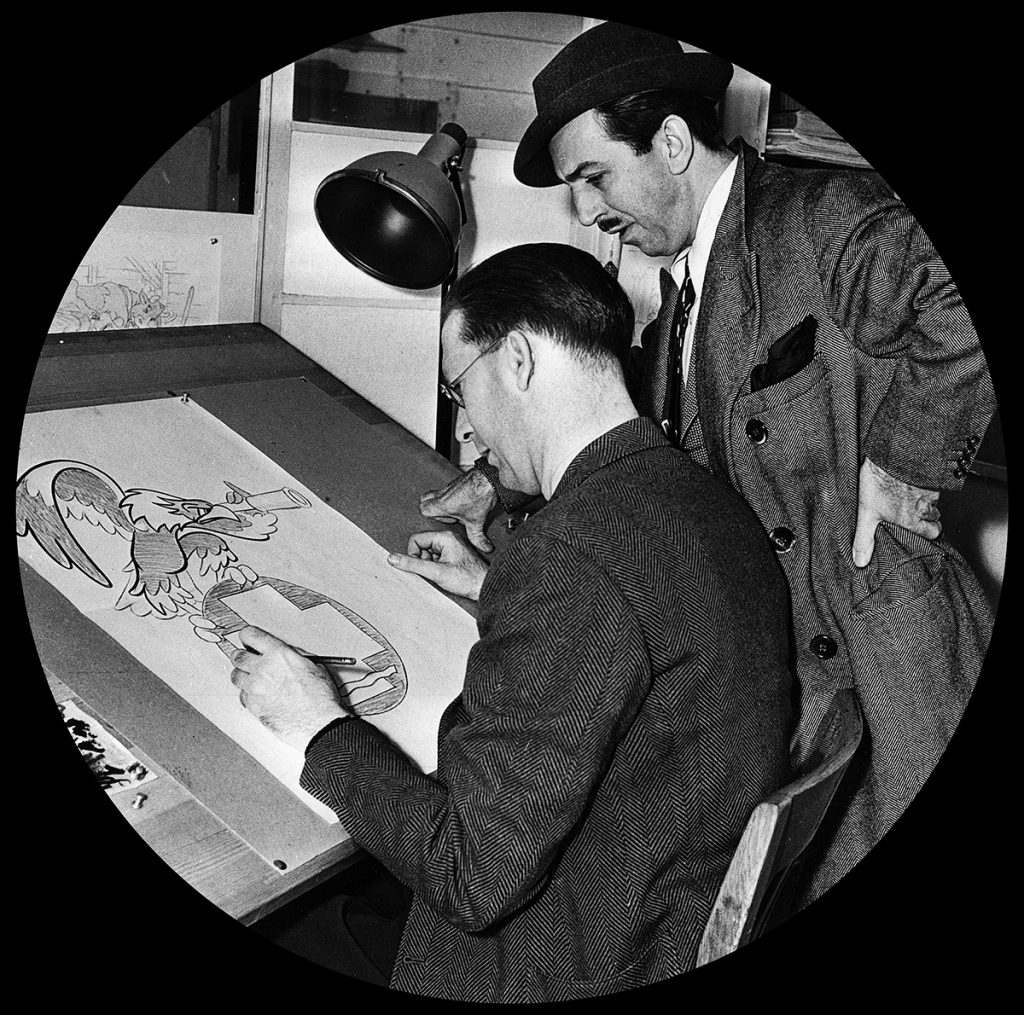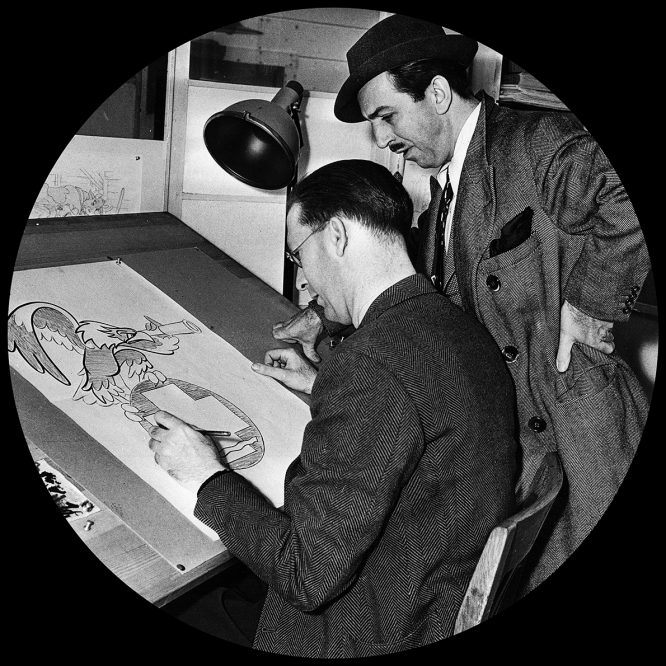Vol. 4, No. 26
Snow White and the Seven Dwarfs, released in December of 1937, is perhaps one of the most iconic animated cartoons ever produced by Walt Disney. As the first full-length animated cartoon, Snow White is one of Disney’s more recognizable characters even today. So, would you believe that this artistic masterpiece was made possible, in part, thanks to a man from Orleans County?
Henry Lyon Porter was born in 1901 in the Village of Albion to Wells H. Porter, a piano tuner, and Nellie Lyon. Porter spent his early childhood in the vicinity of West and West Bank streets and graduated from Albion High School in 1918. At the age of seven, his mother died of cancer leaving his father to care for him; Ella Jackson, the family’s housekeeper, helped raised Henry and his younger brother Allen. Porter was left-handed, and his artistic talents quickly surfaced as a young man, so it is no surprise that he was an illustrator for the Chevron and illustrated the cover for the 1920 Albion High School Yearbook; the cover shows a distressed graduate contemplating the various paths into the professional world. He was also proficient as a pianist.
After completing his studies at Albion, he left for Chicago where he enrolled at the Chicago Academy of Fine Arts. Although his early professional career seems disjointed, he spent some time working for the Knickerbocker Press in Albany as an illustrator and later operated his own commercial artist business in Buffalo for nearly eight years. At some point Porter was given an opportunity to enter the New York School for Walt Disney Animators, which he graduated from in 1936. He quickly picked up and relocated to the Los Angeles studio of Walt Disney to begin his work as an illustrator.
The company was amidst the production of the largest animated undertaking in the history of film to date; Snow White and the Seven Dwarfs. In earlier years, cartoons were often “shorts” that appeared in advance of longer feature films. Disney pushed the envelope, seeking to further expand the impact of animation. To produce such a film was no small task. Illustrations were produced by hand; thousands upon thousands of cartoon images were drawn by dozens of artists to produce the smooth flow of the film.
Despite his rather “late” arrival on the project, Porter found himself in the middle of production efforts. In a letter he wrote home to his father in December of 1937 and later appeared in local papers, he described the painstaking work that went into the detailed illustrations. In this letter, he encouraged the readers to watch for the scenes that he penned. Where the dwarfs exit the mine with shovels, singing “Heigh-Ho, Heigh-Ho, its home from work we go,” they suddenly stop short and pile up onto one another; Porter was responsible for this scene. He also notes that the scene in which the dwarfs force Grumpy to take a bath in a watering trough was “a loo-loo of a scene, was it tough! I worked six months on it.” He also worked on a scene where Dopey gets soap in his mouth and blows bubbles. Perhaps the most remarkable part of this whole movie was the fact that it took illustrators months to produce these scenes, ultimately requiring three years to produce in full.
A simple Google search of “Hank Porter” reveals pages upon pages of auctions for pencil drawings and paintings produced by Porter over the years. Despite his prolific career with Disney, he was overshadowed by his boss and lost his identity as did many of Disney’s illustrators. What we know of his work was passed down by family and some interesting publications about his work during World War Two. During the war, commanding officers submitted requests for illustrated insignias produced by Disney’s company. In this particular photograph, Walt Disney watches as Porter drafts an emblem for the 108th Observation Squadron, depicting a “sharp-eyed eagle” to be displayed on the squadron’s aircraft. Several of these illustrations along with an image of Porter with Roy Williams appeared in the May 26, 1941 issue of Life magazine.
Porter was one of two Disney artists selected to draft these insignias, all produced at no charge to the U.S. military. Porter quickly became Disney’s most dependable illustrator, his boss often calling him “the one-man art department.” He illustrated hundreds of these insignias that appeared on trucks, tanks, ships, and planes across the world. Even more significant than these contributions are the other notable accomplishments that we are aware of. Porter is credited with the redesign of Donald Duck. It is also believed that Porter was responsible for crafting the iconic “looping D” that adorns Disney’s signature. During the 1930s and 1940s, Porter was one of a few illustrators authorized to reproduce Disney’s signature for autographs. So many of those signatures passed around by Walt Disney were the handiwork of Porter.
Unfortunately, Porter’s career was cut short with his untimely death on October 7, 1951. His body was returned to Albion and was interred at Mt. Albion Cemetery.


